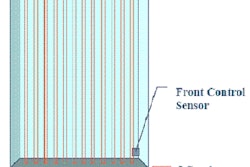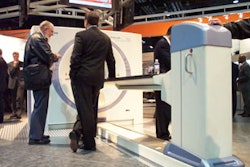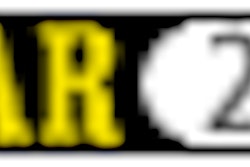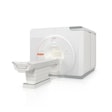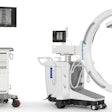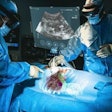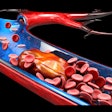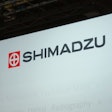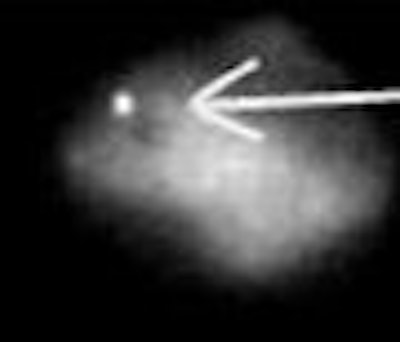
There are probably a few fun facts that you didn't know about the eggplant. For instance, its hues can range from stark white to near-black. During Medieval times, consuming eggplant was thought to induce love -- or madness. Eggplant varieties have colorful names such as Black Beauty, Slim Jim, and Burpee Hybrid. Finally, an eggplant works well as a stand-in for the breast for biopsy training, according to a report in the American Journal of Roentgenology.
"The radiographic appearance of the fibrous eggplant tissue closely resembles that of actual breast tissue," wrote Dr. Matthew Larrison while he was at the University of Alabama Hospital in Birmingham. Dr. David Hogg, an assistant professor in the breast imaging section, is a co-author (AJR, October 2006, Vol. 187:4, pp. 972-974).
For this experiment, a dark purple, large oval eggplant was injected with a sonography gel mixture to provide multiple targets for biopsy training. Multiple samples were obtained using an 11-gauge stereotactic probe (Mammotome ST, Ethicon Endo-Surgery, Cincinnati). Three to five core biopsies were retrieved.
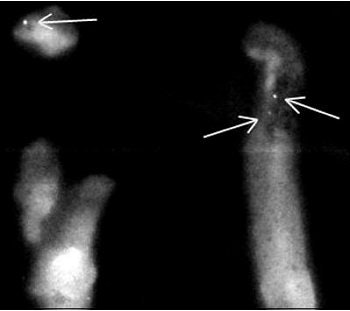 |
| Magnification view of specimen radiograph shows barium particles (arrows) confirming lesion sampling. Larrison M, DiBona A, Hogg DE, "Low-Cost Phantom for Stereotactic Breast Biopsy Training" (AJR 2006; 187:972-974). |
According to the results, "the practical aspects of performing stereotactic breast biopsy are achieved -- visualization and localization of target, retrieval, and confirmation of lesion sampling," with the eggplant phantom, Larrison's group wrote.
Other pluses of the eggplant phantom were the quick procedure time (about 15 minutes) and, of course, low cost. Larrison's group estimated that the eggplant phantom can be produced for less than $20. Real breast phantoms can be priced at approximately $240 each.
However, the eggplant model does have some drawbacks. First, only a small number of cores were retrieved as, after several passes, the eggplant tissue fragmented. Also, the group did not look at whether residents trained on the eggplant did better in a clinical setting than those who did not train on it.
Still, the ready availability of the eggplant phantom, low cost, ease of preparation, and reproducibility might be just the ticket to encourage residents to hone their breast biopsy skills. A study out of Wichita, KS, found that senior-level surgical residents were not taking advantage of the opportunity to perform advanced-level breast procedures in their program (American Journal of Surgery, October 2002, Vol. 184:4, pp. 369-371).
Another study found that there was a significant learning curve associated with stereotactic breast biopsy. Radiologists at Memorial Sloan-Kettering Cancer Center in New York City reported higher technical success rates and lower false-negative rates for residents who racked up a higher number of biopsy procedures (AJR, March 2001, Vol. 176:3, pp. 721-727).
In an e-mail interview with AuntMinnie.com, Larrison, who is now with Birmingham-based Radiology Associates of Alabama, said that working with the eggplant phantom could be used by residents who were just starting out with biopsy training as well as by those looking to hone their skills.
By Shalmali Pal
AuntMinnie.com staff writer
September 19, 2006
Related Reading
Lemon candy may suck for curbing dry mouth after thyroid cancer therapy, May 2, 2005
Aw shucks! Corn-oil-based scintigraphy makes good in gallbladder disorder, January 20, 2005
Ice cream pretreatment improves myocardial sestamibi imaging, October 18, 2002
Blueberry juice enhances pediatric MR urography, April 26, 2001
Copyright © 2006 AuntMinnie.com




